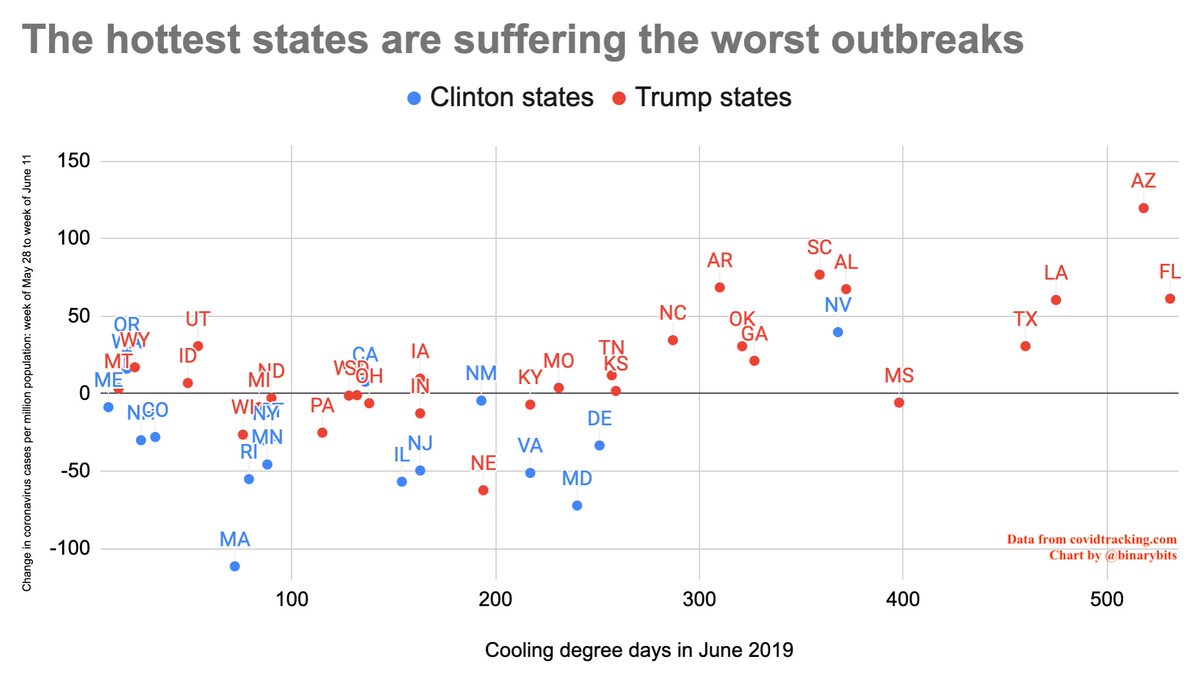
Waymo is in a weird place right now. They're now operating an honest-to-goodness commercial driverless taxi service. No safety drivers. No rider non-disclosure agreements. A pretty big service area (~50 square miles). But it's growing very very slowly. arstechnica.com/cars/2020/12/t…
Three years ago, I thought that if Waymo "solved" the self-driving problem first, as seemed likely, its big challenge would be scaling up quickly enough to grab territory before other companies came to market. I was wrong. arstechnica.com/cars/2017/10/w…
Waymo has driverless cars that can operating in most situations in the Phoenix suburbs. But for some reason they don't seem to be trying very hard to scale up. They haven't provided a clear answer about why not.
One possibility is that their cars are too expensive, but I don't think that's right. Costs for high-tech gear is mostly about scale, so if the service was operationally profitable the capital costs should take care of themselves.
Another possibility is that the back-end costs of operating a Waymo car is higher than the revenue. Perhaps because they have a lot of well-paid people overseeing every ride.
Waymo says that no one is steering the vehicles in real-time, but they might have someone watching the ride in real time ready to hit a kill switch or something if they see a problem. As long as this back-end support costs more than a driver, then the service won't be profitable.
A final possibility is that they're just risk-averse. They want to maintain their near-perfect safety record and they're not yet 100 percent confident its cars won't make a serious mistake.
Such caution is admirable but I don't know what the alternative is to putting cars on the road to see what happens. Maybe they feel there's more they can learn from more simulations or by exhaustively studying a small number of real-world rides.
One other possibility people suggested that I don't think is right: maybe it's really hard to expand their geofence. I see two problems with this theory: (1) I don't think they're close to saturating their current territory
(2) They've barely expanded their geofence at all in the two years since they launched Waymo One. Going from Chandler AZ to Boston might be hard but expanding into Scottsdale should be pretty easy.
Two years ago I wrote a piece comparing Waymo to Xerox PARC, the research center that invented the modern PC in the 1970s and then failed to commercialize it effectively. I think it might prove precient. arstechnica.com/cars/2019/02/g…
Update: Waymo tells me that they're now doing hundreds of rides a week. I'm pretty sure that's more than what they told me at launch in October. So maybe they're scaling up faster now.
One other possibility: maybe Waymo knows how to expand Waymo One to other parts of the Phoenix metro area but decided the economics of a suburban taxi service are so bad that it's not worth the bother until the cars can also operate in dense urban areas.
I am skeptical of this theory because even operating at a modest loss should provide them with a lot of valuable experience and data. But people tell me they are heavily testing in SF right now so maybe they decided to focus there.
• • •
Missing some Tweet in this thread? You can try to
force a refresh



